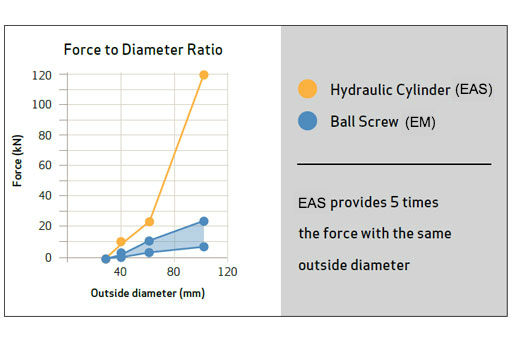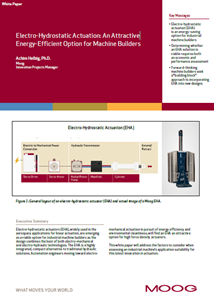Best of Both Worlds In One
Electrohydrostatic Pump Units (EPU) are emerging as viable options for industrial machine builders seeking for compact alternatives to traditional hydraulic or electromechanical motion control solutions.
The Moog EPU is at the heart of electrohydrostatic actuation and combines the advantages of both hydraulic and electro-mechanical actuation technologies in a self-contained product, delivering a high degree of energy efficiency and environmental cleanliness. A total cost of ownership analysis is often used to quantify both the initial savings and the ongoing benefits of an electrohydrostatic actuation system in comparison to traditional hydraulics.
A compact product, the EPU requires no hydraulic infrastructure to be incorporated into a machine and allows machine designers to evaluate the merits of combining both technologies without the fixed cost of the hydraulic system infrastructure.
Electrohydrostatic Pump Unit
Higher Productivity

Higher Energy Efficiency


